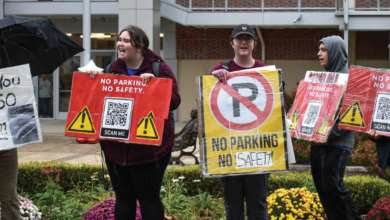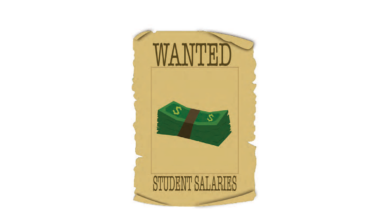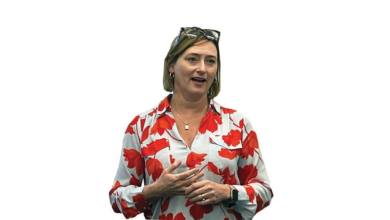
Rider reacts to Michigan State tragedy
By Shaun Chornobroff
WHEN deciding where he was going to attend college, Gabe Kennis narrowed his choices down to Rider and Michigan State University, ultimately decided to enroll at Rider. The reason the senior arts and entertainment industries management major said he chose to venture out to Lawrenceville, New Jersey instead of being the latest member of his family to enroll at Michigan State: scholarship opportunity.
He was alerted on Feb. 13 via email blasts from multiple news organizations that a gunman had opened fire on Michigan State’s campus, resulting in the deaths of three students and injuring five more. In addition to immediately worrying about his cousin and childhood friends who attend the school, Kennis had a moment of realization that he easily could have been there.
“That’s a pure theoretical from four years ago, but it is very harrowing,” said Kennis, who’s typical smile and cheery demeanor escaped him multiple times during an interview with The Rider News. “It was kind of one of those reflective things, where it’s just the choices we make and where we are at any time. You wonder about things like that.”
‘An immediate, very visceral reaction’
The gunman, identified as 43-year-old Anthony Dwayne McRae, opened fire on the East Lansing campus before taking his own life once police located him. According to reports, McRae was carrying a note in his pocket threatening two Ewing, New Jersey, public schools. As a result of the threats, Ewing, a town neighboring Rider, closed its public schools on Feb. 14, the day after the Michigan murders. On the same day, Rider Public Safety notified the university of an increased police presence on campus.
Kennis grew up in Frankfort, Michigan, nearly three hours away from Michigan State’s campus. If you look at the state of Michigan like it’s a hand, Kennis said his hometown is located on the pinky.
In the midst of the shooting, while police were searching for the gunman and Michigan State students were ordered to shelter in place, Kennis said he spent two to three hours in what he described as states of worry and denial before slowly finding out through updates on social media that friends and family that attend the school were safe.
Normally when tragedy strikes, Kennis said his first reaction is to scurry to the internet.
This incident was different.
“It was an immediate, very visceral reaction as soon as I saw that. I’m a person who checks the news very actively, very regularly when I hear of something happening in the news via an alert or something,” said Kennis. “I almost immediately look into it deeper, but this one was not like that. It was like I heard about it and then I wanted to be away from it.”
Eventually, in the shielded space that was his dorm room, Kennis’ few hours of terror started to subside and his friends and family marked themselves as safe. When he finally mustered the courage to check coverage of the shooting for the first time, he didn’t rely on an outlet such as CNN or Fox News, he went to Reuters, “because they’re very emotionless in how they report things.”
“If I was hearing quotes, if I was looking at images, I don’t think I could have done it,” said Kennis. “I turned to the format that felt, I guess, the coldest in some ways, just because I don’t think I could have been in that emotional moment.”
‘How can I better prepare’
The first time Rider Spanish professor Maria Villalobos-Buehner said she noticed the conversations change centering around gun violence on college campuses in the aftermath of the Virginia Tech massacre that killed 23 people in April of 2007.
At the time, Villalobos-Buehner had already been teaching for more than 15 years and was a professor at a university in Grand Rapids, Michigan, while finishing her doctorate degree at Michigan State.
“Now it is that layer of how can I better prepare?” explained Villalobos-Buehner. “That becomes part of your living, part of your routine.”
Villalobos-Buehner graduated from Michigan State with her doctorate in higher, adult and lifelong education in August of 2009. During the latter part of her time at Michigan State, she made an hour-long commute from her teaching position in Grand Rapids to finish her degree in East Lansing, the campus where the Feb. 13 fatal shooting occurred.
When the Columbine High School shootings occurred in April of 1999, Villalobos-Buehner said it “shook the sense of safety” for her as she was preparing to be a mother. It was the first time the idea of a school shooting had occurred to her. Twelve students and one teacher were killed in that Colorado school shooting, and the two gunmen took their own lives.
Villalobos-Buehner said she was at her home on Feb. 13 when she received a notification turning her attention to the campus that had once been a haven of education, conversation and most importantly, safety. Flipping on her television and following the live coverage brought Villalobos-Buehner “closer to that repetitive, senseless loss of lives.”
“As soon as I knew, I said, ‘oh my gosh, Michigan State’ and then hearing the names of places where for me were places that were almost like a sanctuary, that never crossed my mind,” said Villalobos- Buehner, whose daughter graduated from Rider in 2022. “Not even a thought, right? Campuses, university campuses are normally free and normally spaces where there is that freedom, right? To navigate that you feel safe, and that’s how I felt every time I went.”
Before a question could be asked, Villalobos- Buehner opened up her interview with The Rider News by stating her prayers and condolences to the families and students at Michigan State. Seeing the students of a campus that holds an abundance of positive experiences for her be stripped of a sense of guaranteed welfare struck a different chord.
“To see those places that meant collegiality, meeting, safety, security, talking about everything. The place in which you enjoy a really good meal, a cup of coffee or a cup of tea, just turn into this space, that shouldn’t have happened,” said Villalobos-Buehner.
As an educator, Villalobos-Buehner has seen American society evolve from one that was blissfully unaware of violence at schools to one that has elementary school children preparing for the possibility of on-campus violence. She remains aware that she has no way of knowing if she will ever have to help preserve the lives of her students, but remains mentally prepared for the day she might.
“I know that there are these things that I can not control, right? Then I say, ‘What can I do?’” said Villalobos-Buehner. “So I try to bring it to a place in which I can have some control. And what it is, is to inform, ask and see what I can do in that place, and that, in a way, gives me some sense of control.”
Shootings at Rider
Gun violence is far from a normality on Rider’s campus where the Student Code of Social Conduct prohibits possession of weapons on campus, but it has seeped its way onto the university grounds in the past.
On Nov. 9, 2003, a New York Times article headlined “When Campus Violence Flares” described an influx of violence at New Jersey colleges, citing two Rider shootings in the previous month. On Feb. 12, 1980, shots were fired at the Phi Sigma Epsilon fraternity house, leaving two students injured, although both survived and returned to classes, according to a memo sent to faculty and administration nine days after the incident. In March of 1993, Kenneth Bernard McBride died at 21 as a result of being shot in the chest at a party sponsored by the Phi Beta Sigma fraternity in the parking lot outside the student center. A 17-year-old high schooler was charged with the crime. Neither McBride or the teen charged with the crime were Rider students.
“You hear about stuff like this and you realize you’re lucky. You realize that there’s so much that can happen in just a moment, and it’s harrowing,” said Kennis. “At our age we don’t like to dwell on our own mortality and stuff like this makes it very, very abundantly clear.”
Since 2008, Rider has reported three weapons incidents, according to the university Fire Safety Reports. The Fire Safety and Security Report is released in compliance with the Jeanne Clery Disclosure of Campus Security Policy and Campus Crime Statistics Act that requires colleges and universities nationwide to release three years’ worth of statistics annually. Rider has had two arrests for weapons law violations, one in 2011 and another in 2021, and in 2019, one weapon violation handled by campus officials. The reports include all weapons violations, and do not specify when the cases involve firearms.
On its website, Rider has a page dedicated to active shooter responses. The page lists five actions if an active shooter is at the university: figure out, get out, hide out, take out, call out. It explains to assess the situation to see if there is a gunman. If possible, exit the building “away from the immediate path of danger.” Hide if not possible to escape the building and as a last resort, to take out the shooter, using “physical aggression, total commitment and absolute resolve.” Lastly, it says to report the events to authorities when safe to do so.
In the event of an emergency, call 911 or Public Safety at 609-896-7777.


